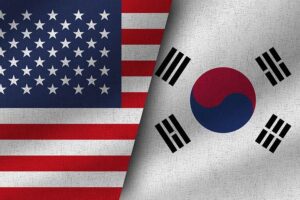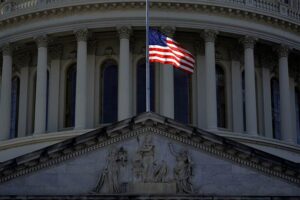Following the inauguration of US President Donald Trump earlier this year, South Korea’s government and corporations have been under increasing pressure to channel hundreds of billions of dollars into investments in the United States as a measure to avoid elevated tariff barriers.
Economic observers have voiced growing unease that these substantial overseas commitments may undermine the long-term health of South Korea’s economy, which remains heavily reliant on its manufacturing sector.
Late last month, the South Korean government pledged to allocate $200 billion in cash and an additional $150 billion for shipbuilding and various industrial projects in the United States over the coming years, with an annual investment cap of $20 billion. In exchange, the US agreed to lower tariffs on Korean exports from 25% to 15%, in line with an agreement reached in July. Washington also promised to transfer propulsion technology to support South Korea’s ambitions of constructing a nuclear-powered submarine.
The deal was finalized during President Trump’s visit to Seoul for talks with South Korean President Lee Jae Myung, held on the sidelines of the Asia-Pacific Economic Cooperation Summit.
Economists have expressed fears that the surge in American investments could reduce corporate capacity for domestic spending, thereby affecting growth in local industries. Professor Hur Jung of Sogang University warned that the trend could lead to the gradual erosion of the country’s manufacturing base if not properly managed. He emphasized the need for the government to intensify efforts to counter this risk. He suggested that the focus should return to traditional sectors such as semiconductors and automobiles, rather than primarily concentrating on artificial intelligence and other emerging technologies.
The concerns extend beyond the $350 billion commitment announced by the government. Numerous South Korean corporations have also declared major investment plans in the US in response to potential tariff increases.
In August, during President Lee’s initial summit with President Trump, several state-backed and private enterprises from South Korea committed approximately $150 billion in new US investments. Hyundai Motor Group announced plans to invest $26 billion in its American operations by 2028, while Hanwha Group announced a $5 billion expansion of its Philadelphia shipyard, acquired last year. Korean Air, meanwhile, is set to purchase 103 aircraft from Boeing by the end of the 2030s, amounting to roughly $36.2 billion.
Economic analysts have questioned the rationale behind the scale of these overseas investments. Former Deloitte Consulting Korea vice chairman Kim Kyeong-joon observed that while domestic facility investments totaled $106 billion last year, South Korean corporations are now prepared to invest $150 billion in the US following a single bilateral meeting. He noted that such a strategy could place undue pressure on the nation’s financial reserves, which currently stand just above $400 billion, and may weaken its capacity for domestic economic development.
According to the Organization for Economic Cooperation and Development, manufacturing contributes around 27% of South Korea’s gross domestic product, nearly double the average of other member states. Given this dependence, policymakers and institutions have begun taking steps to mitigate potential fallout.
The Ministry of Trade, Industry and Resources has announced plans to create a joint forum with researchers and businesses to address the emerging challenges. Similarly, the Bank of Korea, in a recent report, cautioned that the situation could evolve into a major economic concern unless proactive measures are implemented. The central bank called for a collective effort among the government, corporations, and households to reform the nation’s aging industrial structure.
However, some officials have dismissed fears of large-scale deindustrialization as premature. Presidential Secretary for Policy Kim Yong-beom argued that many core operations, including research and development facilities, continue to operate within South Korea, suggesting that the domestic industrial base remains resilient despite the surge in foreign investments.













